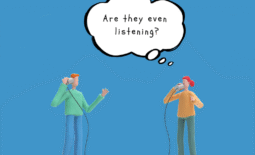Unmasking Shame: Recognizing Symptoms in Your Partner
Shame is a complex emotion that can silently affect individuals, impacting their well-being and relationships. When it comes to your partner, being attuned to signs of shame is crucial for fostering understanding, empathy, and support. It’s also important for you to understand what your partner might need to do to heal. Let’s explore some common symptoms of shame that you may observe in your partner, helping you navigate these emotions together and strengthen your connection.
Avoidance and Isolation:
Symptom: Your partner may exhibit a tendency to avoid certain conversations or situations, withdrawing and isolating themselves.
Observation: Notice patterns where your partner avoids discussing specific topics or distances themselves emotionally.
Defensive Behavior:
Symptom: Responding defensively to feedback or criticism, even if it’s constructive, can be a sign of shame.
Observation: Observe how your partner reacts in challenging situations—defensiveness may indicate underlying feelings of shame.
Negative Self-Talk:
Symptom: Persistent negative self-talk, self-criticism, or expressions of feeling unworthy are common manifestations of shame.
Observation: Listen for phrases or statements that reflect a harsh judgment of oneself.
Difficulty Accepting Compliments:
Symptom: Individuals experiencing shame may struggle to accept compliments, deflecting praise due to a belief that they are undeserving.
Observation: Note your partner’s response when receiving compliments and whether they downplay their achievements.
Changes in Body Language:
Symptom: Nonverbal cues, such as slouched posture, averted gaze, or crossed arms, can indicate feelings of shame.
Observation: Pay attention to your partner’s body language during emotionally charged conversations or vulnerable moments.
Perfectionistic Tendencies:
Symptom: Setting unrealistically high standards for themselves can be a way for individuals to cope with shame.
Observation: Take note if your partner consistently strives for perfection and exhibits distress when falling short.
Emotional Distancing:
Symptom: Creating emotional distance as a protective mechanism is common in those experiencing shame.
Observation: Be aware of shifts in emotional intimacy and connection, especially if your partner seems to be emotionally withdrawing.
Recognizing symptoms of shame in your partner is a crucial step toward fostering open communication and offering support. Approach the conversation with empathy and a willingness to listen, creating a safe space for them to share their feelings. Of course, they will need to be the one to do the necessary therapeutic work, and they will do it when they are ready. Defensiveness and being emotionally reactive can be very problematic for the relationship and will need to be addressed. By understanding and addressing shame together, you can strengthen your relationship and navigate challenges with compassion and resilience. Remember, breaking the silence surrounding shame is a powerful journey toward healing and connection.




